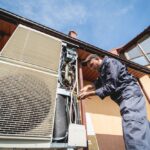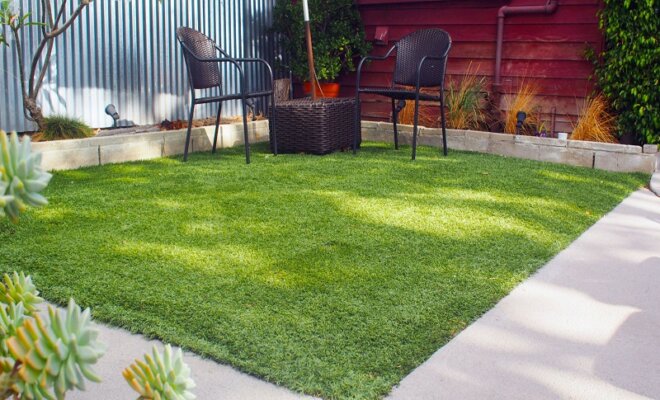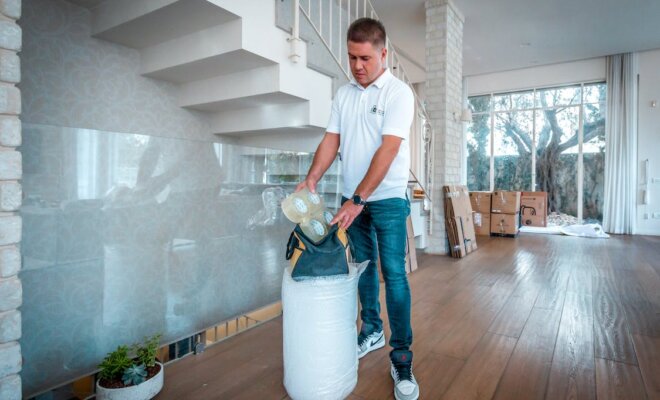In recent years, artificial turf has become an increasingly popular choice for homeowners, sports facilities, and businesses seeking a low-maintenance and visually appealing alternative to natural grass. Artificial turf, also known as synthetic grass or fake grass, offers numerous advantages that make it an excellent choice for a variety of applications. In this comprehensive guide, we’ll explore the many benefits of artificial turf, its installation process, maintenance, and environmental considerations, helping you make an informed decision about whether artificial turf is right for your needs.
The Advantages of Artificial Turf
- Low Maintenance
One of the primary reasons people opt for artificial turf is its minimal maintenance requirements. Unlike natural grass, fake grass doesn’t need mowing, watering, fertilizing, or pest control. It remains lush and green year-round, reducing the time and money you spend on lawn care.
- Durability
Artificial turf is designed to withstand heavy foot traffic, making it an ideal choice for high-traffic areas like sports fields and playgrounds. It can endure the demands of various sports and activities, making it a durable and long-lasting solution.
- Water Conservation
Water scarcity is a growing concern in many regions, making artificial turf a sustainable choice. By eliminating the need for regular watering, it helps conserve water resources and reduces the environmental impact associated with lawn maintenance.
- All-Weather Surface
Artificial turf is designed to withstand various weather conditions, from scorching heat to heavy rainfall. It provides a consistently even playing surface for sports and recreational activities throughout the year.
- Aesthetically Pleasing
Modern artificial turf is meticulously engineered to resemble the look and feel of natural grass, with a lush, green appearance that stays consistent, regardless of the weather. It enhances the visual appeal of residential and commercial spaces.
- Weed and Pest Control
Artificial turf eliminates the need for pesticides and herbicides, reducing the environmental impact and potential health risks associated with these chemicals. This makes it an eco-friendly choice for landscaping.
The Installation Process
- Site Preparation
The first step in installing artificial turf is to prepare the site. This involves removing existing vegetation and debris, ensuring the surface is level and properly compacted.
- Base Construction
A stable base is crucial for the longevity and performance of artificial turf. Typically, a base layer of crushed stone or gravel is installed and compacted to create a firm foundation.
- Weed Barrier
To prevent weeds from growing through the artificial turf, a weed barrier fabric is placed over the base layer. This helps maintain the pristine appearance of your synthetic grass.
- Turf Installation
The artificial turf is carefully unrolled and secured to the ground using stakes or adhesive. Seams are joined and concealed, and the turf is meticulously trimmed to fit the installation area.
- Infill Material
Infill material, often made of sand or rubber granules, is evenly spread over the turf. This infill enhances stability, provides cushioning, and supports the fibers, ensuring the longevity of the synthetic grass.
- Final Grooming
After the installation is complete, the artificial turf is groomed to give it a natural appearance. This includes brushing the fibers and ensuring the turf has a uniform texture and appearance.

Maintenance Tips
While artificial turf requires less maintenance compared to natural grass, some care is necessary to ensure its longevity and appearance:
- Regular Brushing: To keep the fibers standing upright and maintain an even appearance, periodically brush the artificial turf with a stiff broom or brush.
- Remove Debris: Regularly remove leaves, twigs, and other debris to prevent them from accumulating on the surface.
- Clean Spills: For pet owners or areas prone to spills, clean up any mess promptly to prevent staining and odors.
- Professional Inspection: Consider an annual professional inspection to address any potential issues and ensure the turf’s optimal performance.
Environmental Considerations
While artificial turf offers various environmental benefits, it’s essential to consider the materials used in its construction. Some artificial turf products may contain chemicals or materials that can be of concern. It’s advisable to research eco-friendly options that use recycled materials and are free from harmful substances.
Conclusion
Artificial turf is a versatile and sustainable landscaping solution that offers numerous advantages for homeowners, sports facilities, and businesses. Its low maintenance, durability, water conservation benefits, and aesthetic appeal make it a popular choice for a wide range of applications. By understanding the installation process, maintenance requirements, and environmental considerations, you can make an informed decision about whether artificial turf is the right choice for your needs. Whether you’re looking for a pristine lawn, a sports field, or a pet-friendly outdoor space, artificial turf can provide a green and worry-free solution that enhances your surroundings.










